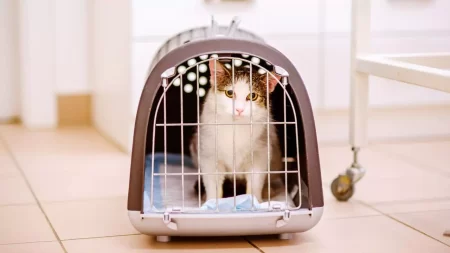Ever been ambushed by a tiny ball of fur with razor-sharp claws scaling your leg? Kittens naturally tend to climb, and your legs can be irresistible targets. While it might seem adorable at first, constant climbing can become annoying and even painful. Let’s delve into the reasons behind this behavior and explore ways to gently discourage it.
Why Kittens Scale Human Legs?
Several factors contribute to a kitten’s desire to climb your legs:
- Natural Climbing Instincts: Cats are natural climbers. In the wild, their ancestors climbed trees for hunting, escaping predators, and surveying their surroundings. This instinct carries over into domestic cats, and your legs provide a perfect vertical structure for them to explore.
- Seeking Attention and Affection: Kittens are social creatures who crave interaction. Climbing your legs can be their way of getting close to your face for a cuddle or a playful swat. They might be seeking your attention, especially if they feel neglected or bored.
- Coping with Boredom: Kittens have boundless energy and a strong urge to play. If they lack stimulating toys or climbing structures, they might resort to using your legs as a source of entertainment.
- Influence of Youthfulness: Kittens are simply young and inexperienced. They haven’t yet learned appropriate boundaries or how to interact with humans gently. They might not understand the pain their claws can inflict.
Potential Hazards of Kitten Climbing
While kitten climbing can be cute, it’s important to consider the downsides:
- Risk of Scratches and Wounds: Sharp claws can leave painful scratches on your legs, especially if the kitten gets excited or startled.
- Development of Behavioral Issues: If left unchecked, persistent climbing can become a bad habit that’s challenging to break later on.
- Threats of Injuries to Kittens and Owners: A sudden jump or excited climb can cause you to lose your balance, potentially leading to falls and injuries for both you and the kitten.
Strategies to Discourage Kittens from Climbing Legs
Here’s how to gently redirect your climbing companion:
- Alternatives for Climbing Activities: Provide your kitten with a variety of climbing structures that cater to their natural instincts. Look for scratching posts that are tall and sturdy, with different textures like sisal or carpet to keep them engaged. Cat trees with multiple levels, platforms, and dangling toys offer a fun and stimulating climbing environment. Climbing shelves mounted on walls can utilize vertical space effectively and provide a safe vantage point for your kitten to observe their surroundings. Regularly rotate toys and introduce new climbing challenges to keep your kitten interested.
- Effective Training Techniques: When your kitten starts climbing your legs, the key is to redirect their attention immediately. Gently but firmly pick them up and place them on a scratching post or another designated climbing spot. Use a toy to lure them away from your legs and encourage them to climb the appropriate structure. Reward good behavior with praise, petting, or a small treat. Consistency is crucial in training. If your kitten persists in climbing your legs, disengage completely by walking away or ending playtime. This teaches them that climbing your legs doesn’t get the desired response.
- Importance of Claw Maintenance: Regularly trimming your kitten’s claws not only minimizes the damage from scratches but also promotes healthy paw development. You can trim their claws yourself using cat nail clippers or take them to a groomer for a professional trim.
- Use of Climbing Deterrents: In some cases, deterrents like double-sided tape or a scat mat placed strategically on furniture or areas you don’t want them climbing can be helpful. However, these should be used as a last resort after trying positive reinforcement techniques first. The sticky feeling of double-sided tape can be unpleasant for kittens, discouraging them from climbing on furniture. Scat mats emit a harmless but startling burst of air when activated by pressure, creating a negative association with the area. Remember, deterrents should be combined with positive reinforcement to provide your kitten with acceptable climbing alternatives.
By understanding the reasons behind your kitten’s climbing behavior and implementing these strategies, you can discourage them from using your legs as a climbing gym. Patience, consistency, and positive reinforcement are key to shaping your kitten’s behavior and fostering a harmonious relationship.







